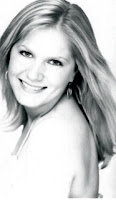Parts of Braces
Appliance: Anything your orthodontist attaches to your teeth which moves your teeth or changes the shape of your jaw.
Archwire: The metal wire that acts as a track to guide your teeth along as they move. It is changed periodically throughout treatment as your teeth move to their new positions.
Band: A metal ring that is cemented to your tooth, going completely around it. Bands provide a way to attach brackets to your teeth.
Bond: The seal created by orthodontic cement that holds your appliances in place.
Bracket: A metal or ceramic part cemented ("bonded") to your tooth that holds your archwire in place.
Coil Spring: A spring that fits between your brackets and over your archwire to open space between your teeth.
Elastic (Rubber Band): A small rubber band that is hooked between different points on your appliance to provide pressure to move your teeth to their new position.
Elastic Tie: The tiny rubber band that fits around your bracket to hold the archwire in place. They come in a variety of colors.
Headgear: Headgear uses an external wire apparatus known as a facebow to gently guide the growth of your face and jaw by moving your teeth into proper position. The force is applied to the facebow by a spring-loaded neck strap or head strap. The straps have a safety release that disconnects if the facebow is pulled or snagged.
Headgear Tube: A round, hollow attachment on your back bands. The inner bow of your headgear fits into it.
Hook: A welded or removable arm to which elastics are attached.
Ligature: A thin wire that holds your archwire into your bracket.
Lip Bumper: A lip bumper is an archwire attached to a molded piece of plastic. The lip bumper holds back the molars on your lower jaw to provide more space for your other teeth.
Mouthguard: A device that protects your mouth from injury when you participate in sports or rigorous activities.
Palatal Expander: A device that makes your upper jaw wider.
Retainer: An appliance that is worn after your braces are removed, the retainer attaches to your upper and/or lower teeth to hold them in place. Some retainers are removable, while others are bonded to the tongue-side of several teeth.
Separator or Spacer: A small rubber ring that creates space between your teeth before the bands are attached.
Tie Wire: A fine wire that is twisted around your bracket to hold the archwire in place.
Wax: Wax is used to stop your braces from irritating your lips.
Orthodontic Procedures
Banding: The process of fitting and cementing orthodontic bands to your teeth.
Bonding: The process of attaching brackets to your teeth using special orthodontic cement.
Cephalometric X-ray: An X-ray of your head which shows the relative positions and growth of the face, jaws, and teeth.
Consultation: A meeting with your orthodontist to discuss a treatment plan.
Debanding: The process of removing cemented orthodontic bands from your teeth.
Debonding: The process of removing cemented orthodontic brackets from your teeth.
Impressions: The process of making a model of your teeth by biting into a soft material that hardens into a mold of your teeth. Your orthodontist will use these impressions to prepare your treatment plan.
Invisalign®: An alternative to traditional braces, Invisalign straightens your teeth with a series of clear custom-molded aligners. Invisalign can correct some, but not all, orthodontic problems.
Ligation: The process of attaching an archwire to the brackets on your teeth.
Panoramic X-ray: An X-ray that rotates around your head to take pictures of your teeth, jaw, and other facial areas.




